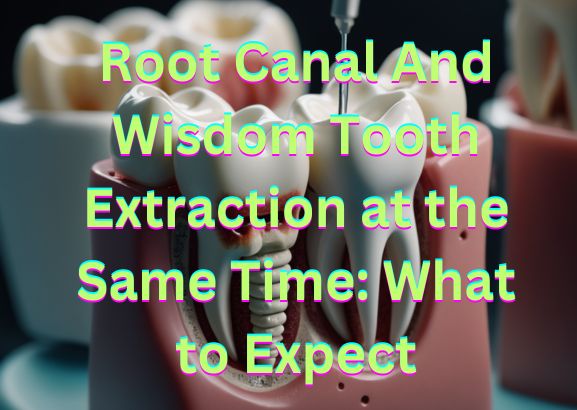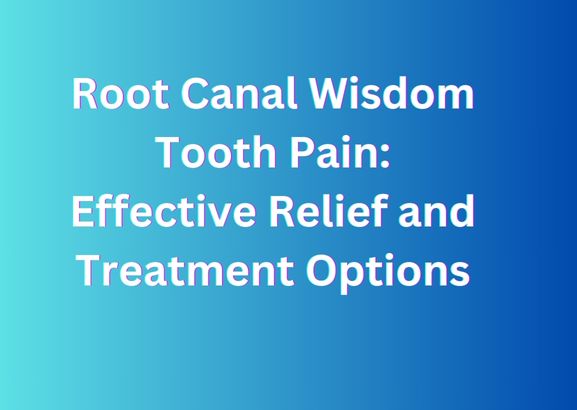Soft Tissue Impacted Wisdom Tooth Removal: Quick and Painless Procedure
Last Updated on 6 months by DR. ALBIN SIPES
Soft tissue-impacted wisdom tooth removal involves the surgical extraction of a wisdom tooth that has not fully erupted from the gum and is causing pain or discomfort. This procedure is performed by a dentist or oral surgeon to prevent further complications and alleviate symptoms associated with the impacted tooth.

Credit: bestdentistinhouston.com
Understanding The Impacted Wisdom Tooth
The impacted wisdom tooth refers to a condition where the tooth does not fully emerge. This can lead to pain and discomfort in the back of the mouth. Impacted wisdom teeth can cause several symptoms, including jaw pain, swelling, and difficulty opening the mouth fully.
Other common signs may include bad breath, headache, and a strange taste in the mouth. If you experience any of these symptoms, it is essential to visit a dentist. They will be able to determine if the wisdom tooth is impacted and recommend the appropriate treatment.
Extraction is often the solution for impacted wisdom teeth to alleviate the pain and prevent further complications.
The Importance Of Removing Impacted Wisdom Teeth
The timely removal of impacted wisdom teeth is crucial for maintaining overall oral health. Failing to remove impacted wisdom teeth can lead to potential complications. These complications may include infections, cysts, gum disease, tooth decay, and damage to adjacent teeth.
Leaving impacted wisdom teeth untreated can also result in overcrowding, misalignment, and bite problems. Factors such as age, anatomical factors, and inadequate space in the mouth can increase the risks associated with leaving impacted wisdom teeth. However, by removing impacted wisdom teeth in a timely manner, these risks can be mitigated.
Timely removal of impacted wisdom teeth ensures the prevention of oral health issues while promoting a healthy and well-aligned smile.
The Quick And Painless Procedure For Soft Tissue Impacted Wisdom Tooth Removal
Soft tissue-impacted wisdom tooth removal is a quick and painless procedure with several steps. Local anesthesia and sedation options are available to manage pain effectively. Minimally invasive techniques are used to ensure smooth soft tissue-impacted wisdom tooth removal.
Post-procedure care is crucial for a speedy recovery. Following the dentist’s instructions and maintaining proper oral hygiene is essential. Drinking plenty of fluids and eating soft foods can aid in reducing discomfort. It is important to avoid smoking, drinking through a straw, or engaging in strenuous activities for a few days.
Additionally, applying an ice pack to the affected area can help reduce swelling. By following these steps and taking care of oneself, the recovery process after soft tissue-impacted wisdom tooth removal can be comfortable and hassle-free.
Factors Affecting The Quick And Painless Removal Of Impacted Wisdom Teeth
The position and angulation of the impacted tooth play a crucial role in the quick and painless removal process. Dental professionals rely on radiographic evaluation and pre-operative planning to assess the exact position of the tooth and determine the best strategy for extraction.
By properly analyzing the x-rays and understanding the tooth’s alignment, dentists can develop a customized approach that minimizes discomfort and ensures efficient removal. Additionally, the expertise and skill of dental professionals also contribute to the overall success of the procedure.
Their experience allows them to navigate around soft tissue and nerves, reducing the risk of complications and enhancing patient comfort. By considering these factors and relying on careful evaluation and planning, dental professionals can perform soft tissue-impacted wisdom tooth removal that is both quick and painless.
Common Myths And Misconceptions About Impacted Wisdom Tooth Removal
Soft tissue-impacted wisdom tooth removal can be a cause for concern, but there are common myths and misconceptions surrounding the procedure. Contrary to popular belief, the fear of pain and discomfort during the removal process is unfounded. Recovery time is often shorter than anticipated, and complications are rare.
Additionally, it is important to debunk the misconception that impacted wisdom teeth do not need to be removed if they aren’t causing any immediate problems. In reality, impacted wisdom teeth can lead to various oral health issues if left untreated.
So, it is essential to consult with a dental professional who can assess the situation and provide the necessary guidance for a safe and successful removal.
Tips For Choosing The Right Dental Professional For Wisdom Tooth Removal
Choosing the right dental professional for wisdom tooth removal is crucial. Seek an experienced and qualified oral surgeon for this important procedure. Factors to consider include their expertise, credentials, and success rate. Look for someone who specializes in oral surgery and has a track record of successful extractions.
A skilled professional will ensure a smooth and efficient removal process, minimizing any potential complications. It is essential to prioritize the safety and well-being of your oral health, so take the time to research and select the most suitable dental professional for your specific needs.
Remember, when it comes to wisdom tooth removal, a knowledgeable and experienced oral surgeon can make a significant difference in your overall comfort and satisfaction.
Frequently Asked Questions On Soft Tissue Impacted Wisdom Tooth Removal
What Is A Soft Tissue Impacted Wisdom Tooth?
A soft tissue impacted wisdom tooth is a third molar that has erupted partially, causing the gum to grow over it. It can be painful and lead to swelling and infection if not treated.
How Is A Soft Tissue Impacted Wisdom Tooth Removed?
During the removal procedure, the dentist will make an incision in the gum tissue to access the impacted tooth. The tooth is then carefully extracted, and the incision is stitched closed. Local anesthesia or sedation may be used to ensure comfort during the procedure.
What Are The Complications Associated With A Soft Tissue Impacted Wisdom Tooth?
If left untreated, a soft tissue impacted wisdom tooth can cause pain, swelling, and infection. It may also lead to damage to adjacent teeth, gum disease, cyst formation, or jawbone damage. Prompt removal can prevent these complications.
How Long Does It Take To Recover From Soft Tissue Impacted Wisdom Tooth Removal?
Recovery time varies for individuals, but typically it takes about a week to fully recover from soft tissue impacted wisdom tooth removal. During this time, it is important to follow post-operative care instructions provided by the dentist and avoid activities that may hinder healing.
Can I Eat Normally After Soft Tissue Impacted Wisdom Tooth Removal?
After the procedure, it is recommended to consume soft foods that do not require much chewing, such as soup, yogurt, and mashed potatoes. Avoid hard and crunchy foods that may irritate the surgical site. Gradually introduce solid foods back into your diet as your healing progresses.
Conclusion
To sum up, removing a soft tissue impacted wisdom tooth can be a necessary procedure to alleviate pain and prevent further complications. This procedure is typically performed under local or general anesthesia, ensuring patient comfort throughout. After the tooth is removed, there may be some discomfort and swelling, but following post-operative care instructions will promote a speedy recovery.
It’s important to note that every individual’s experience may vary, so consulting with an experienced oral surgeon is crucial to determine the best course of action. Seeking early treatment for impacted wisdom teeth can prevent potential problems such as infection, overcrowding, and damage to adjacent teeth.
By understanding the signs and symptoms of impacted wisdom teeth and seeking prompt medical attention, individuals can maintain optimal oral health and prevent future complications. Don’t hesitate to consult with an oral surgeon if you suspect you may have an impacted wisdom tooth.



